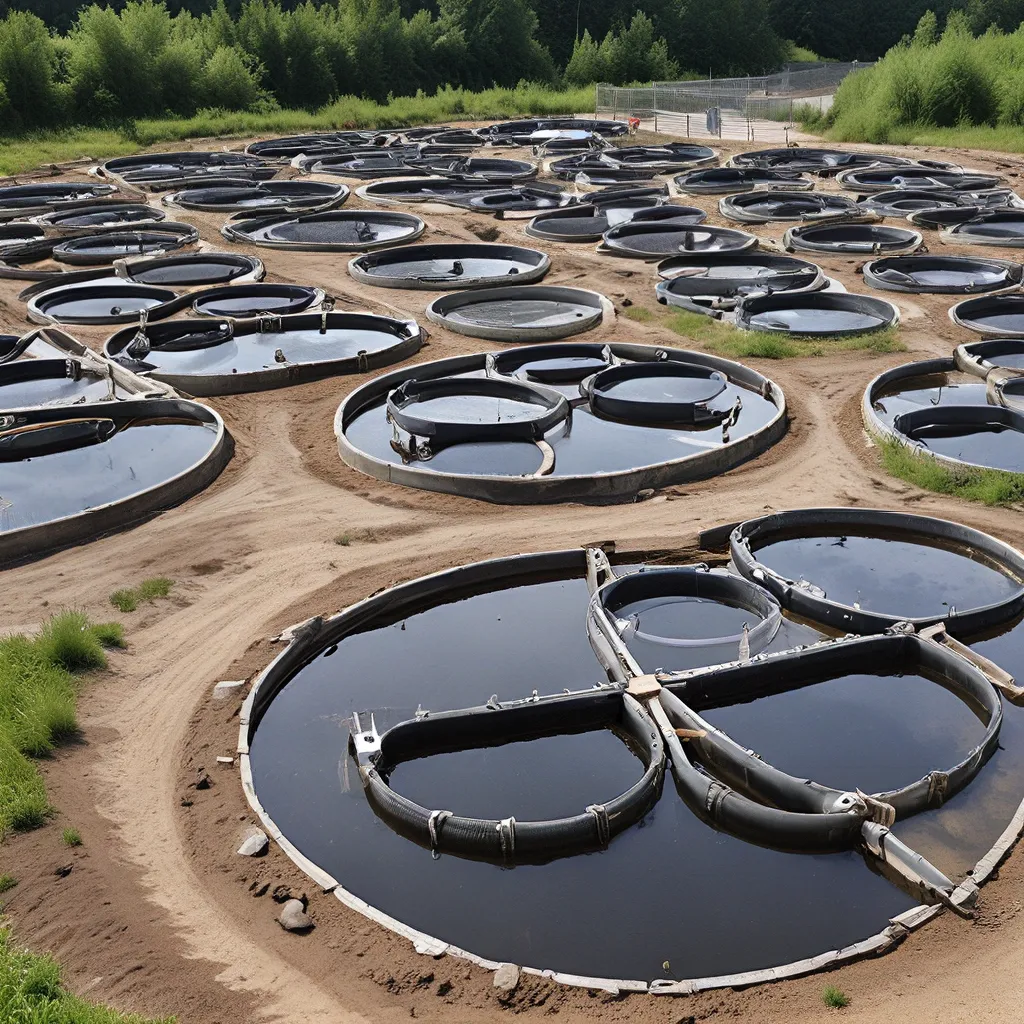
Ah, the world of wastewater treatment – where the mundane becomes the magnificent, and the unseen becomes the remarkable. As an advocate for sustainable practices, I’ve always been fascinated by the transformative power of this industry. And let me tell you, there’s a lot more to it than just flushing and forgetting.
You see, the traditional linear approach to resource consumption and waste management is slowly but surely giving way to a more circular model. This circular economy is all about maximizing the value of our resources by keeping them in use for as long as possible, extracting the maximum utility, and then recovering and regenerating products and materials at the end of their service life.
And at the heart of this circular revolution? Wastewater treatment. It’s the unsung hero, quietly working behind the scenes to turn our once-discarded waste into valuable resources. Let me take you on a journey through this exciting realm and show you how the industry is valorizing waste streams to drive resource recovery and reuse.
Harnessing the Power of Reverse Osmosis
One of the key technologies at the forefront of this circular transformation is reverse osmosis (RO). You may have heard of it in the context of desalination, where it’s used to transform seawater into freshwater. But did you know that RO has far greater potential than just that?
Think about it – RO is essentially a filtration process that separates dissolved solids, salts, and other contaminants from water. And guess what? Those “contaminants” can actually be valuable resources in their own right. As the experts at Clean Energy and Resource Recovery point out, RO can be transformed to reduce energy, improve sustainability, and ensure cost-effective freshwater production.
But the real magic happens when we start looking at the brine, or concentrate, that’s left over after the RO process. This brine is a treasure trove of valuable minerals and compounds, just waiting to be harvested and repurposed. And that’s where the concept of resource recovery comes into play.
Extracting Value from Brine
Imagine a world where the waste from one process becomes the raw material for another. That’s the essence of the circular economy, and it’s exactly what’s happening with brine from RO systems.
As the team at Energy Recovery explains, the brine left over from RO desalination can be a rich source of nutrients, metals, and other valuable compounds. By valorizing these waste streams, we can extract and recover these resources, reducing the environmental impact and creating new revenue streams.
It’s a bit like turning lead into gold, but in a much more sustainable way. Imagine being able to recover valuable metals like lithium, magnesium, and potassium from the brine. Or extracting nutrients like nitrogen and phosphorus to use as fertilizers. The possibilities are endless, and the environmental benefits are immense.
Just think about it – we’re transforming waste into wealth, all while reducing our reliance on virgin resources and minimizing the environmental footprint of our activities. It’s a win-win-win scenario, and it’s being driven by the innovative and forward-thinking minds in the wastewater treatment industry.
Embracing Energy Efficiency and Recovery
But the circular economy revolution in wastewater treatment doesn’t stop there. The industry is also leading the charge when it comes to energy efficiency and energy recovery.
As the research shows, wastewater treatment plants can experience significant energy-saving benefits while still satisfying regulations for minimal liquid discharge and zero liquid discharge. It’s all about finding innovative ways to harness the power of the waste and turn it into a valuable resource.
One example that comes to mind is the use of CO2 refrigeration systems in wastewater treatment plants. These systems can help reduce emissions and energy use while protecting operations against rising temperatures – a crucial consideration in an era of climate change.
But the real game-changer is the integration of energy recovery technologies. Imagine being able to capture the energy released during various processes and use it to power other parts of the plant. It’s like turning waste into energy, and it’s changing the way we think about resource utilization in the wastewater industry.
The Future of Wastewater Treatment
As I look to the future, I can’t help but feel a sense of excitement and optimism about the direction of the wastewater treatment industry. The circular economy principles that are being embraced are not just transforming the way we manage our waste, but they’re also creating new opportunities for innovation, entrepreneurship, and sustainability.
Imagine a world where every drop of water is treated as a precious resource, where nutrients and minerals are reclaimed and repurposed, and where energy is generated from the very waste we once discarded. It’s a future that’s not just possible, but one that’s being actively pursued by the visionary leaders in this industry.
And let’s not forget the broader societal benefits. By valorizing our waste streams and recovering valuable resources, we’re not only reducing our environmental footprint, but we’re also creating new jobs, stimulating local economies, and contributing to a more sustainable future for all.
So, if you’re like me and you’re passionate about building a more circular and sustainable world, I’d encourage you to keep a close eye on the wastewater treatment industry. Because trust me, the future is bright, and it’s being fueled by the remarkable innovations happening in this unsung corner of the sustainability movement.